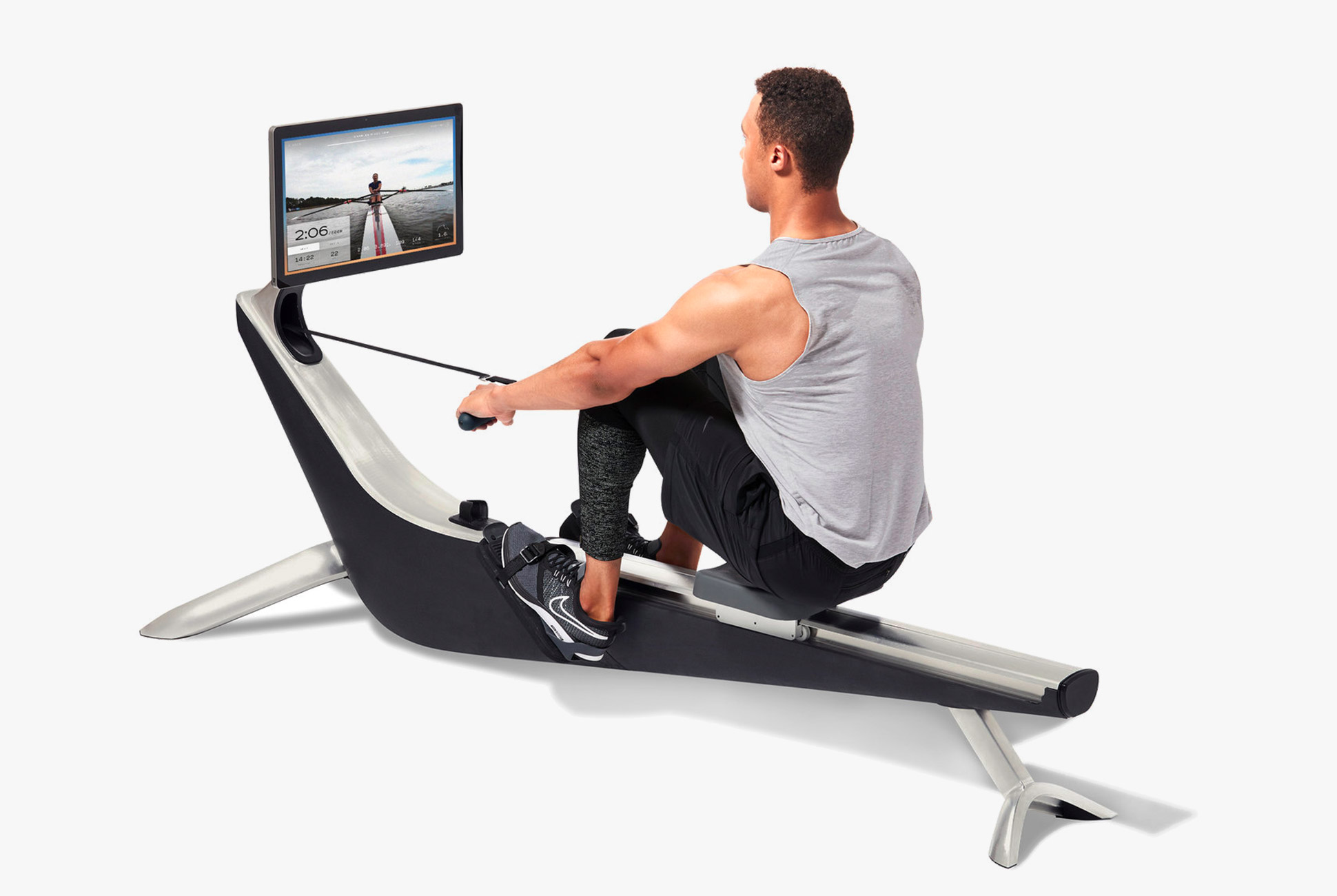Picture, if you can, standing in front of a body-length mirror in your living room, suited up in workout clothes, with a sweat towel and water bottle close at hand. At a pre-determined time, you switch on the mirror, and see a trainer standing there in front of you, as if she’s in your living room, too. She greets you, introduces herself, outlines the yoga class ahead and then launches into some warm-up poses. With its full-size LCD display and surround-sound speakers, the high-tech Mirror seems to have brought the group fitness experience home. But it’s only when she critiques your downward-facing dog form — a camera and microphone allow her to see and hear you, too — that it feels super authentic.
Welcome to the brave new world of virtual fitness, where you can tap into the energy and expertise of top-notch trainers without setting foot inside a gym and where, believe it or not, exercise is actually fun. One of the fastest growing segments of the booming fitness industry, it includes everything from slick smartphone apps with on-demand HIIT classes to boutique gyms where VR-equipped cable resistance warriors descend Matrix-style into a virtual world to fling fireballs at oncoming monsters. And, with thousands of gyms getting onboard and venture capital pouring into the companies producing it, it’s being hyped as the biggest fitness trend of 2018. Soon it will be so ubiquitous, they say, that no matter where you fall on the spectrum — from group class groupie to committed couch potato — you’re likely to be engaging in it within a couple of years.
Just as there are two ends of the fitness spectrum, there are two main approaches to virtual fitness that are likely to appeal to opposite ends of that spectrum. On the more traditional side — for those already committed to a fit lifestyle — gyms and equipment manufacturers are racing to make group fitness classes and personal trainers available to their clients anytime, anywhere via on-demand apps and remote classes filmed live inside the gym. On the sci-fi sounding side — for people who just can’t abide the self-torture of exercise — new companies are harnessing VR technology to, more or less, turn it into a game. Both approaches take advantage of the fact that 1) Americans are currently obsessed with fitness, 2) we’re not very good at it and, finally, 3) technology, our favorite salve, has advanced far enough that, we hope, we might just be able to cure our fatness for good.

Outside of the Box
There’s nothing new about taking group fitness home; in fact, it’s an idea that traces its roots back to those early 1980s fitness tapes featuring the likes of Jane Fonda and Kathy Smith. It makes sense, too, since there are plenty of reasons — busy schedules, tight budgets and social anxiety, among them — that people have trouble sticking to a strictly gym-based regimen. In recent years, most of the new developments in this space have been on YouTube or smartphone-based apps that compete with traditional gyms.
What’s changing now, though, is that the clubs themselves are getting in on the act, and in a big way. More than 12,000 fitness clubs globally offer their clients a virtual option — either an app with pre-recorded classes on-demand, live-streamed classes or a cinematic digital fitness studio where members can exercise together to pre-recorded classes — a number that represents 300 percent growth in the past few years and is expected to double again by 2020. And, contrary to what you’d think, these offerings actually bolster live class participation, according to new research by Les Mills. The New Zealand-based digital fitness juggernaut says that 75 percent of virtual fitness users also attend live classes, and clubs that run virtual workouts see a 12 percent average increase in live class attendance. Further research from Wexer found that 52 percent of virtual users visit the gym at least three times a week, and they tend to stay longer than other members.
The upshot is that the likes of Gold’s and Crunch (and countless others) are now offering their own digital training apps, each of which comes with a $10/month additional subscription fee. “It provides a seamless experience,” Fitness Industry Technology Council President Brian O’Rourke told IHRSA. “Members can do exactly the same classes they enjoy at the club. They have access to classes they wouldn’t be able to find online. With the live-streamed classes, there also can be specific interaction with, and shout-outs to, members working out at home.” The next frontier, he adds — and the next new revenue stream — for health clubs is digital memberships, where far-flung members pay a monthly fee to “attend” high-quality group exercise classes.
Bridging the gap between club-based virtual fitness classes and VR fitness games are the growing number of companies like Peloton — Flywheel and True Rowing are two relatively new arrivals to the space — that sell pricey stationary bikes ($2,000), treadmills ($4,000) and rowing machines ($2,000) that can mimic the outdoor experience in your living room, or stream meticulously produced live and on-demand classes to their built-in displays.

Gym Class Hero
At this year’s CES, a company called Black Box VR made waves, landing a coveted CES Innovation Award, with the world’s first fully automated cable resistance machine that integrates virtual reality. The idea behind the machine, which will soon be making its debut in a boutique Black Box gym in San Francisco, is to disguise exercise as an immersive game inside a virtual world, where you’re the hero, flinging fireballs at monsters. The point, in other words, is to make fitness fun. In an interview with JWT Intelligence, Black Box co-founder Ryan DeLuca summed it up succinctly: “Video games make you sacrifice your health, but you want to keep playing,” he said. “Fitness is good for your health, but it’s so boring that even the best fitness athletes in the world would stop.”
And Black Box, for its part, isn’t alone. In fact, there are so many VR fitness games coming online these days that an independent monitoring group, the Virtual Reality Institute of Health & Exercise, has sprung up to measure each game’s calorie impact on the human body and release objective ratings based on their findings. Their ratings to date range from 2.26 calories/minute (a “Walking Equivalent”) on a thriller of a game called “Job Simulator” to 15.32 calories/minute (a “Sprinting Equivalent”) for “Thrill of the Fight,” an intense boxing game.
Another company, called VirZOOM, produces VR software that integrates with exercise bikes and allows you to play games where you race in the Tour de France, lasso bank robbers in the Old West, feed ducks from a kayak, ride a flying Pegasus and engage in tank battles. How hard and fast you pedal the bike controls key elements of each game, whether it’s speed, how far you can throw the lasso or whether your Pegasus has flight energy.
While all of these VR games put you at the center of the action in imaginary worlds, the storylines, where they exist, aren’t nearly as immersive as more traditional games, and the action appears far too repetitive to keep you engaged workout after workout (a problem, perhaps, with having to find a way to force you to move).
As the biggest trend in an industry that’s largely trend-driven, the question now isn’t whether virtual fitness will be a part of your life, but when it will be. And when it does, will it prove effective, or will the effects be more…well, virtual.



